
In case you hadn’t noticed, fashionable clothing for men has barely changed over the past 200 years.
The coat-tie-trousers-hat ensemble was established in the 1820s. The only significant change has been the abandonment of the hat, once the most personal and most expressive item in a man’s wardrobe.
While the basic elements have remained constant, men’s clothing has seen countless variations over the past two centuries. Each year, it seems, brings new coat lengths, tie widths, and lapel cuts. But as this 1930 advertisement shows, there is a strong resemblance between the suit of today and of 70 years ago.
In the ’30s, a Post article posed the question that has occurred to most men who’ve wandered the aisles of a clothing store and shaken their head at the strange, new fashions: “Where do they come up with this stuff?” Based on his experience as a buyer, Arthur van Vlissingen declared that new styles weren’t dictated by either clothing retailers or manufacturers; neither could afford to gamble on an upcoming trend.
New styles become popular only when men see other men wearing them. “Men, unlike women, seldom discard a garment simply because the style has meanwhile changed. The average man who buys one of our suits wears it until, from his standpoint, it is worn out. … But men are none the less sensitive to style. They will [only] buy clothing which is … the fashion in their social circles, whatever these circles may be. They are determined to start even with their fellows every time they get new outfits,” Vlissingen wrote.
But this only explains how styles grew, not how they were born. He explains that, ultimately, new fashions were started by men who had their clothes made for them. These men included the successful executive, who needed to prove his ability to sense a new trend and his willingness to invest in it. Also included was the salesman, who had to demonstrate to his customers that he was aware of the latest developments, both in his own business and in fashion.
Younger men followed “styles which take shape at the places where the country’s leisured and socially prominent loaf, such places as Palm Beach and Newport, Aiken and Southampton, White Sulphur and Virginia Hot Springs.”
Another major influence on fashion in the 1930s was college—one university, in particular. “The fashions in clothing worn by our male population, between the ages of 14 and perhaps 25, usually get their start at Princeton,” Vlissingen wrote.
“Harvard is a very large university, in a great city which influences the students’ styles heavily. [But] it holds to a tradition of careless dress—well-made clothes seldom dry-cleaned and never pressed. Yale is more compact and more finicky, but New Haven is also a large city. Princeton is in a smaller town, off by itself where it can incubate a style effectively. Practically every Princeton student is well dressed, whereas only one-third or so of the Yale men can qualify by our standards.”
Whether they were at a resort or on a campus, these young men made up “a selective group of people, to whom adheres social prestige, [which] absents itself from cities all over the country. During their absence these men quite unconsciously decide what sorts of clothing they wish to wear. Then they scatter to their homes and are imitated by their friends, from whom, in turn, the style spreads in ever-widening circles.”
In addition to the fashion example set by the successful executive or the big man on campus, American men’s tastes were strongly influenced by the clothing they saw actors wearing in motion pictures.
Mr. Jinks, the well-known wholesale grocer of a mid-Kansas town, would indignantly and honestly deny that he buys his clothes according to what he sees at the movies. But the chances are that his clothier can recognize in Mr. Jinks’ halting description of the suit he wants, the outfit against which Marlene Dietrich pillowed her comely cheek at the Lyric last night.
No longer can a New York salesman come into Mr. Jinks’ store wearing a shepherd-plaid suit with two-inch checks, a red necktie, with a diamond horseshoe, and a pair of high-yellow shoes—not if he wants Mr. Jinks to think he’s dressed in the latest style.
Mr. Jinks may not be particularly alert about styles, and maybe he has not been in a town of more than 25,000 population for two years. But, like almost everyone else on the North American continent, Mr. Jinks goes to the movies. So does the traveling salesman. Which helps to account for the fact that the old-fashioned traveling man in loud clothes has gone the way of the passenger pigeon. Douglas Fairbanks and his well-dressed fellows have done him to death.
Gone are the days when movies introduced men to elegant dinner jackets, stylish sport coats, and raffish neckwear. Today’s movies are more likely to reflect the style du jour: work pants, T-shirt, and baseball cap, which are worn by movie moguls, software tycoons, and every big man on campus. Perhaps the 200-year-old fashion for men will, at last, be replaced.
1930s Fashion: Men’s Suits
Become a Saturday Evening Post member and enjoy unlimited access. Subscribe now
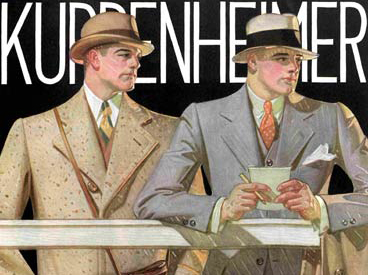
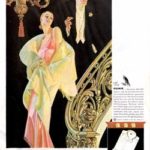

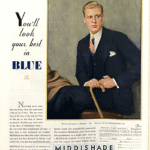







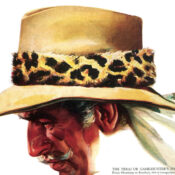
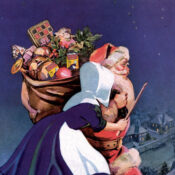
Comments
Makes me wonder if present-day men’s fashion publications have made any difference. With gay and metro-sexual’s focus on current trends and developing some fashion sense, I wouldn’t be surprised. I’m amused to find that this month, nearly every magazine I see has something on the cover about fashion, even if it isn’t a fashion magazine. September is when designers and their fashion houses show their biggest collections during Fashion week, starting in New York, then on to London, Milan and Paris. As for the younger male, what is seen on the movie screen or the latest music video could heavily influence their style image.
A guy shops to buy a new suit.
The salesman says, “Try this one one.”
The guy agrees it is a beaut,
So he proceeds the suit to don.
But it is a horrible fit.
So the salesman says to the guy,
“Bend over at your waist a bit.”
“And twist your legs in at the thigh.”
“Hunch your shoulders, hands in your pants.”
The salesman makes a selling score,
Giving the guy such song and dance.
The guy waddles out the shop door.
Passersby pity his deformed lot,
But what a nice fitting suit he’s got!